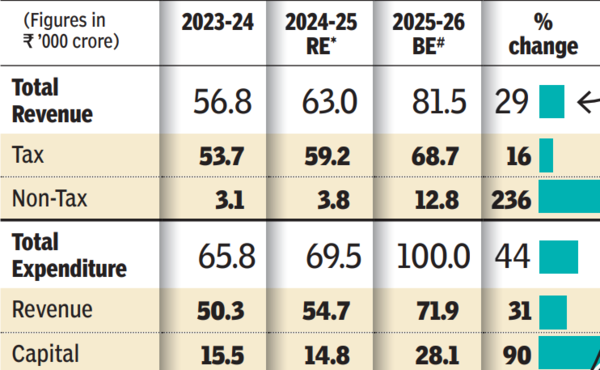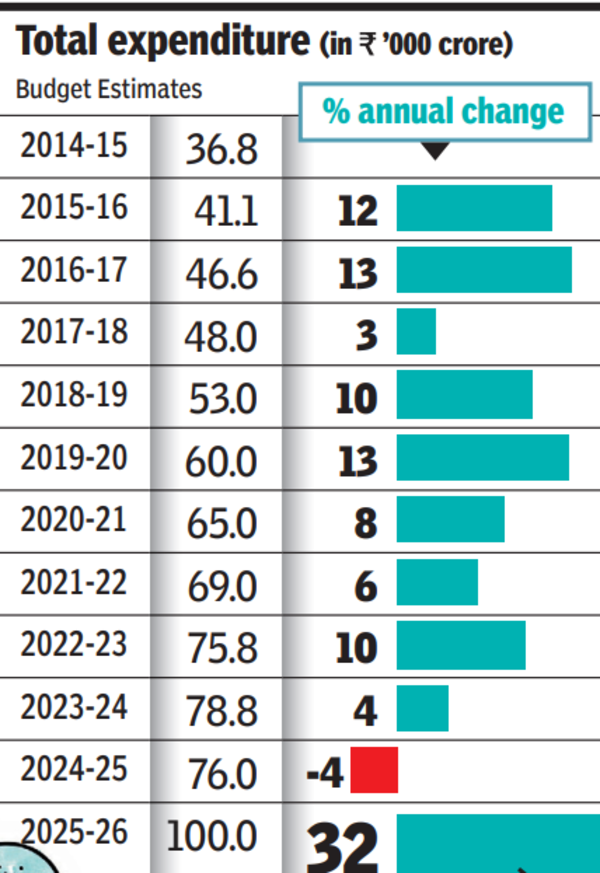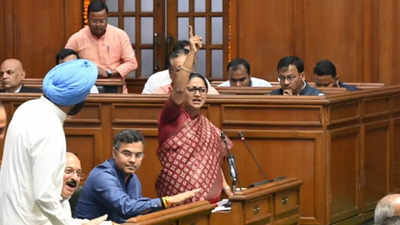NEW DELHI: The Bharatiya Janata Party, having taken control of Delhi’s administration, presented a hefty Rs 1 lakh crore budget for 2025-26 in the national capital on Tuesday. The allocation marks a notable increase of 31.6% from the Rs 76,000 crore set aside in the preceding year, sparking widespread dialogue amongst the city’s residents.

Understanding total expenditure trends 2014-2026
- The financial journey of expenditure over the years tells an interesting story. Starting from a modest Rs 36.8 thousand crore in 2014-15, the spending steadily increased to Rs 41.1 thousand crore in 2015-16, representing a 12% growth.
- The subsequent years witnessed continued expansion, with expenditure reaching Rs 46.6 thousand crore in 2016-17, followed by Rs 48.0 thousand crore in 2017-18. The growth momentum continued as spending rose to Rs 53.0 thousand crore in 2018-19 and Rs 60.0 thousand crore in 2019-20.
- During the challenging period of 2020-21, expenditure increased to Rs 65.0 thousand crore, followed by Rs 69.0 thousand crore in 2021-22. The upward trend persisted with Rs 75.8 thousand crore in 2022-23 and Rs 78.8 thousand crore in 2023-24.
- Interestingly, 2024-25 saw a slight decrease to Rs 76.0 thousand crore, marking a -4% change. However, projections for 2025-26 indicate a substantial increase to Rs 100.0 thousand crore, suggesting renewed fiscal expansion.

More than 3-times jump is largely funded by grants from the Centre.
Nearly 30% rise in total revenue is ambitious considering it grew only 11% previous year.
Highest jump in spending in at least a decade, comes after a year of negative growth.
Chief minister Rekha Gupta‘s administration has allocated the highest proportion of funds to education, with Rs 19,291-crore, representing approximately 19.3% of the total budget (Rs 16,396 crore in 2024-25). The transport sector, including roads and bridges, received Rs 12,952 crore (Rs 7,470 crore in 2024-25), whilst the health sector was granted Rs 12,893 crore (Rs 8,685 crore in 2024-25).
Delhi’s finances got a taste of ‘double engine’ model that BJP had pitched before the elections — the key driver of the record surge in spending are grants and loans from central govt.
Gupta, who manages the finance portfolio as well, declared an allocation of Rs 5,100 crore towards Mahila Samriddhi Yojana, a programme offering Rs 2,500 monthly assistance to underprivileged women over 18 years of age.
Additionally, her government allocated funds for implementing the Ayushman Bharat health initiative, enhanced pension benefits for elderly citizens, widows and the destitute, and established decentralised sewage treatment facilities to stop contaminated water from entering the Yamuna.




